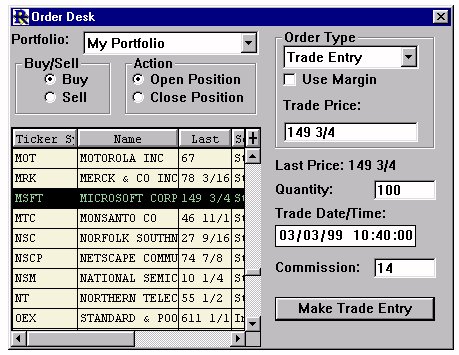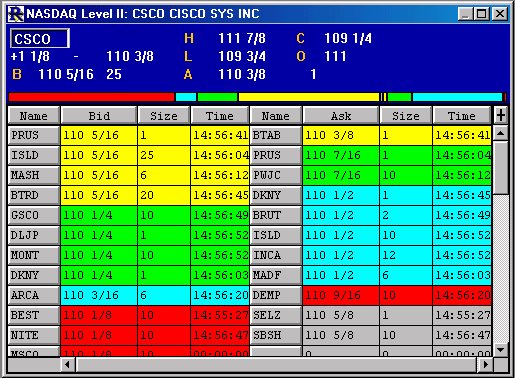Portfolios
The portfolio object is a spreadsheet with many characteristics in common with the quote page object. The key difference is that the portfolio contains only instruments in which the user has an open position. Each row of the portfolio spreadsheet represents an open position in a particular instrument. A position may be long or short, cash or on margin. The portfolio object performs a variety of accounting functions to show the gain or loss in each position and the total gain/loss of the portfolio as price updates are received.




